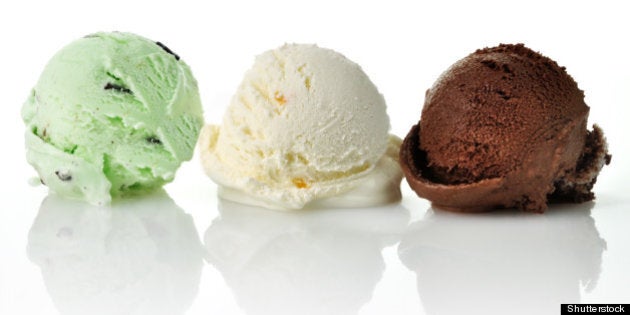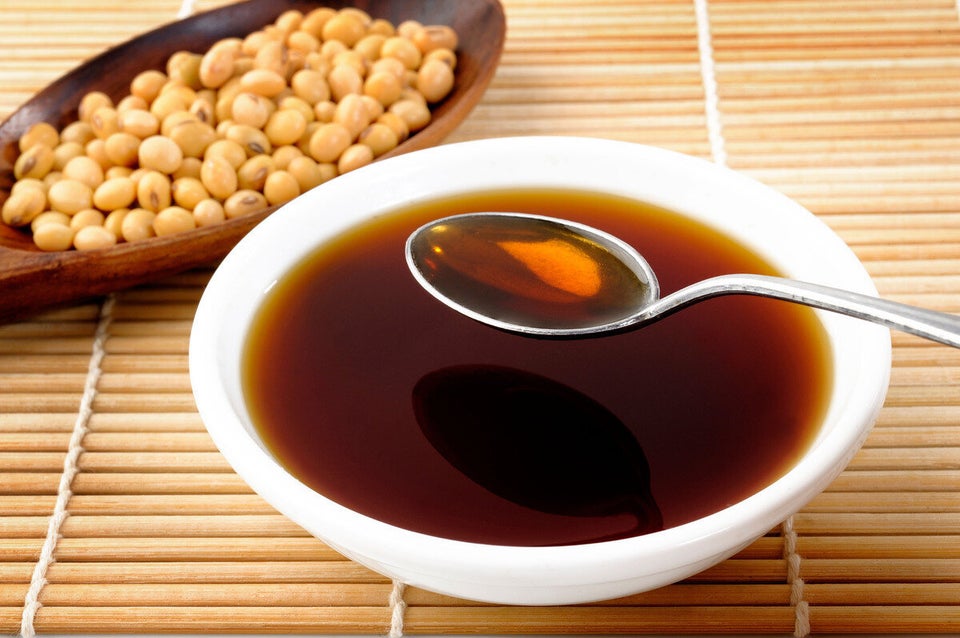
Nothing will make you realize how many foods have gluten in them like being told you are not allowed to eat any of them ever again. That's what April Peveteaux heard a couple years ago when she was diagnosed with celiac disease: no more bread, no more pasta, no more beer, no more pizza. And she was mad.
There is a lot of happy-go-lucky, hooray-for-gluten-free living stuff out there, said Peveteaux, a blogger and the author of Gluten Is My Bitch. "That was not how I felt when I was diagnosed with celiac," she added, laughing. Granted, her diagnosis solved the mystery of health problems so serious they'd landed her in the hospital—there was some good news. But a little mourning was in order, and she advises that others who feel the need to have a moment of silence for baguettes indulge themselves. "Nobody else is going to feel sorry for yourself because they don't understand," she pointed out.
Peveteaux rejected both the idea that she wasn't allowed to be sad about having to go gluten free and that she could never eat good food—even carby food—again. Her book has 50 recipes for traditionally gluten-laden comfort foods that she's reworked so they can be enjoyed by the millions of people who have celiac disease or are gluten intolerant.
Story continues after slideshow.
How many millions? According to the Canadian Celiac Association, it’s estimated that one in 133 Canadians and Americans has celiac disease. In the United States, an estimated 20 million people have gluten sensitivity, according to the Celiac Sprue Association. And an increasing number are finding that for one reason or another, reducing or eliminating gluten from their diets makes them feel better. For those with celiac, continuing to eat gluten can mean experiencing everything from digestive issues and rashes to infertility and even cancer.
That means there's an increasing awareness of what gluten is—it's the protein that makes bread deliciously fluffy and chewy and gives dough its stretch—and why some people need to avoid it. It also means that more people know what's off-limits in a gluten-free diet: anything containing wheat, rye, and barley, like bread, pasta, and beer.
But there are a bunch of foods out there that have gluten hiding in them, and even those who are on a strict no-gluten diet may be eating them, totally unaware of the problem. This list of 11 sneaky sources of gluten will better prepare you the next time you're grocery shopping or out to eat.
Soy Sauce: Sad news for fans of Chinese cuisine: soy sauce has just a few ingredients, and one of them is wheat. That doesn't mean you can no longer enjoy a bit of soy sauce and wasabi with your sushi—though skip the tempura. Fortunately, tamari is an excellent substitute that tastes the same but doesn't have the gluten. Bragg's Liquid Aminos also do the job, and has less sodium. Just make sure to ask about any soy sauce that may be used in your food during cooking when you're eating out.
Thickener: If a packaged food says "thickener" anywhere on the label, proceed with caution. In Canada, food labels now have to indicate if a major allergen—including gluten or wheat—is present, which is one more reason why reading labels is a fact of life now. But foods imported from other countries may not follow those rules, and prepared foods at restaurants won't be that clear either. Pay particular attention to sauces, soups, and salad dressings, where flour is often used to thicken.
Generic Tylenol: Peveteaux was surprised to learn that the generic acetaminophen she was taking for stomach pain contained gluten. Other medications and supplements contain gluten, and that information is not always available on the packaging. The website Gluten Free Drugs provides a list of safe medications.
Faux Meats: If you're vegetarian and gluten free, get acquainted with beans, because a lot of the faux meats you may have relied on before are not going to be an option. Many faux meats contain vital wheat gluten as a key component, and considering gluten is right in the name of the ingredient, that's a no no. Tofu and tempeh are gluten free, assuming if nothing has been added to them, but seitan is not.
Starbucks Light Syrup: Peveteaux's tale of the skinny vanilla lattes from Starbucks is a perfect example of how those who are gluten free have to do extra digging when eating outside of the home. When it became clear that she was eating gluten from an unknown source, she started digging and by contacting Starbucks directly she learned that the company uses gluten in its light drink syrups. An excuse to get the full-fat version?
Communion Wafers: Yes, most communion wafers have gluten, though there are some companies making a gluten-free option. You could consider asking your diocese to provide the gluten-free variety if you take communion, though there is some controversy over whether or not they're allowed by the Catholic Church.
Lipstick: Turns out it's not true that the average woman eats six pounds of lipstick over her lifetime, but you do put it on your mouth, so you'll want to make sure it's gluten free—and not all of it is. Most cosmetic companies don't list this on the packaging, so you may have to do some digging here.
Spice Blends: Straight spices like dried herbs should be fine for anyone avoiding gluten, but spice mixes can sometimes be a problem. Wheat flour or wheat starch is sometimes used as a carrier agent in pre-mixed spice blends; if you can't find out if a particular blend is safe, then it may be wisest to make your own combos. (On the plus side, this is fun!) Blogger Shauna James Ahern at Gluten-Free Girl recommends spices and blends from McCormick Gourmet as gluten free, after working with the company and touring their facilities.
Ice Cream: Of course you'll have to avoid ingredients like cookies and cookie dough in your ice cream, but there can be less obvious sources of gluten in your frozen treats as well. Watch for flavourings like malt as well, and specialty flavours that would be made in smaller batches may have increased risk of cross contamination.
Licorice: Did you ever stop to think about what those red licorice sticks are made of, other than the obvious sugar? Turns out the key ingredient is wheat, which makes them off limits on a gluten-free diet.
Malt Vinegar: Malt vinegar is often made with barley, which is a gluten-containing grain, so this ingredient can be problematic. Distilled malt vinegar is generally considered safe because the distillation process removes any traces of gluten. Some people who are highly sensitive still report issues with vinegars made from gluten-containing grains, so you may want to proceed with caution.
